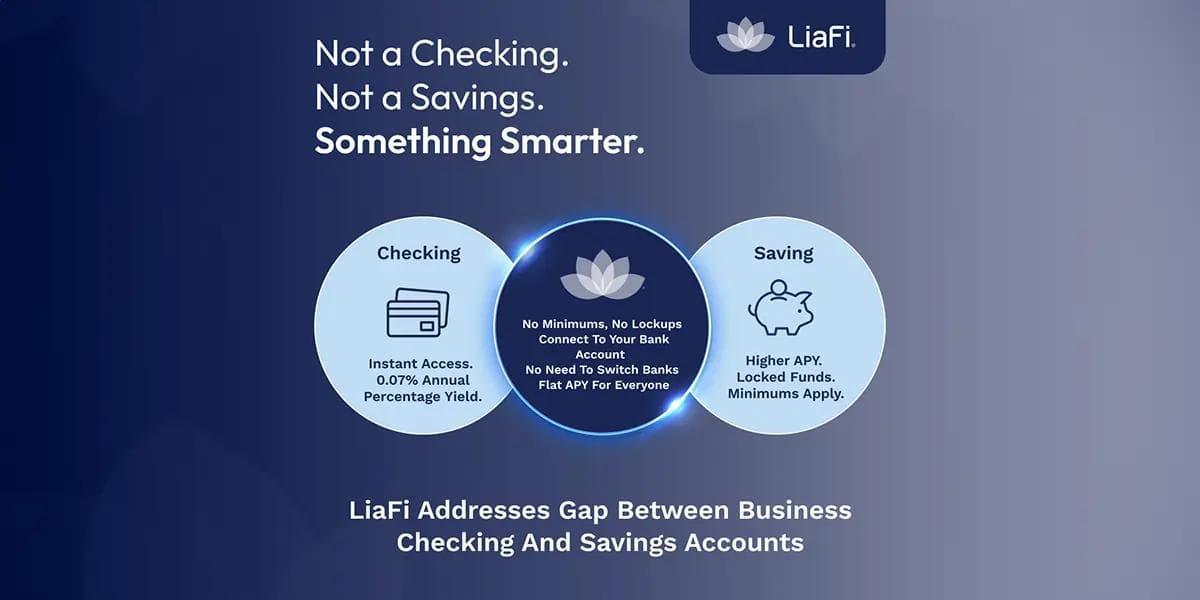Tony Hughes, CEO of leading sales and negotiation specialists, Huthwaite International, examines how B2B selling is changing, and how we can best prepare our sales teams for the future.
I recently came across an old proposal from the early 1980’s to a global IT hardware vendor.
The needs presented were almost identical to the needs we see today; difficulty communicating value, lack of quality leads, weak competitive differentiation, losing margin in the negotiation phase and wasting resources chasing deals that ultimately end in a decision to do nothing.
Interestingly, not much has changed, and sales teams in 2018 are facing the same challenges as their pre-digital colleagues in the 1980s. It’s a fact.
It’s the same with B2B customer needs too. The fundamental phases that each individual goes through when making a buying decision haven’t changed. It’s basic human psychology. It’s timeless behaviour that takes centuries to evolve, if indeed it does.
So, if human behaviour is indeed timeless, are the things that do change of any concern? Absolutely yes, and they should be addressed. In fact, when it comes to B2B selling, there are two important strategies to consider, each as important as the other. Firstly, become an expert in the things that don’t change. And secondly, introduce flexibility and agility to respond to those issues that are changing.
So what doesn’t change?
People buy for the same reasons they always did, to solve problems, avoid unwanted consequences, satisfy needs and reap the benefits and value of an improved situation. A sales person’s ability to uncover and develop those problems and needs and present their solution in the most persuasive way possible, is vitally important. Expert consultative selling skills are crucial to B2B sales success.
- The psychology of making major buying decisions
The core process when making major buying decisions is constant but each phase in that process needs a different approach. Sellers can monitor their markets and customer base to identify changes that will trigger the buying process. They can get close to the customer as their needs and requirements are being identified to build value and differentiation. Then, when the customer is evaluating the various options, effective salespeople will be identifying and influencing the decision criteria and analysing the competitive landscape to ensure you have the best match.
People buy when the value of change exceeds the cost of that change. Huthwaite refers to this as Value = Benefits – Cost. It’s a balance. All too often we see sales people trying to tip the balance by taking things off the ‘cost’ side.
As decision-making teams become bigger and more complex, effective sales people must become even more adept at understanding them. The sales team needs to accurately identify the role each individual has in the decision. This may or may not bear any relation to their job title, their attitude towards the project – are they an advocate or a blocker? Or to their opinion of your sales organisation – are they friend or foe?
All else being equal, individual buyers will favour the solution that best meets their personal interests. It’s human nature. But they are hardly likely to declare it, and may not consciously be aware of it. So how can a salesperson uncover, and sell to, these personal needs?There are always clues. They may be contextual; someone nearing the end of their career is more likely to be looking for an easy implementation, whilst someone starting on the career ladder may be looking for a boost. Or they may be verbal, little things like the use of a particular word or turn of phrase that gives an insight into the individual’s personal drivers.
How can we introduce flexibility and agility to respond to those issues that are changing in B2B selling?
Whilst it’s true most changes occur at the margins, that doesn’t make them insignificant. Change creates opportunities. Effective sales people actively seek it out. By monitoring your markets it’s possible for you to spot change before your customers do. That gives you an opportunity to raise those changes with your customers proactively, what we would today call ‘insight selling’.
- More sophisticated buyers
More sophisticated buyers require more sophisticated sales approaches and the ‘talking catalogues’ who focus on product/service capability and price are rapidly disappearing. As buyers take a broader view so must sellers. For example, by talking specifically about how the solution meets the needs the buyer has expressed and implied, by focussing on value not price, and examining more sophisticated cost models such as total cost of ownership, pay per use or life-cycle value.
- Rise of professional procurement
Professional buyers are customers too. However, excluding them from the process for as long as possible is a mistake. If the buyer comes in late, with no knowledge of the value and little understanding of the needs, they can focus on only one thing – price. Effective sales people engage with procurement early. They build relationships, uncover the buyer’s needs and drivers and seek to create value for them too.
- Pace of product development
Rapid product development is a real headache for the sales team. On the one hand it’s great to have something new to sell but how do you keep on top of it all? Unless there is an astute marketing team to work its magic, product development will give sales teams a list of product capabilities and features. And no one buys features. Effective sales and marketing teams take a step back. They review the information provided by product development and ask two questions; “What problems does it solve? And “What value/benefit does it bring?”
As it becomes harder to keep secrets it’s harder to hide inconsistencies and, more importantly, irregularities. Not only do you need one globally consistent sales methodology but one that is based on the highest possible professional and ethical standards.
Buyers will tell you they can buy your solution cheaper elsewhere, regardless of whether that’s true. Train your sales people to have the confidence and resilience to justify your value and the skills to defend it at the negotiation table.
- Size/complexity of decision-making unit
Everything we said when discussing internal politics earlier becomes even more critical as the decision-making unit becomes bigger and more complex. Sales people must be trained to penetrate and navigate it effectively.
Conclusions
Most change is gradual – evolution not revolution. As a result most changes are the modification of existing ideas and real game-changers are rare.
Because the core issue within B2B selling have been around, unchanged, for a long time, that means the core competency models that address those issues don’t need to change either. What worked 40 years ago still works today because it’s addressing the same issues now as it was then. That’s why SPIN® Selling, in its 4th decade, is as effective and in demand as ever. And why it remains the most researched, validated and sustainable sales methodology in the world.
It’s very easy to be seduced by the latest ‘revolutionary’ or ‘game-changing’ concepts, tools and models. When it comes to those rapid changes at the edges of B2B selling these ground-breaking solutions can give you the agility and flexibility you need.
Where change does happen, at the periphery, it is fast, so here you must develop the agility and flexibility to respond quickly.Seek out quick-fixes for the marginal issues but rely on an established methodology, like SPIN® Selling, to address the core principles.
Tony Hughes, CEO of leading sales and negotiation specialists, Huthwaite International, examines how B2B selling is changing, and how we can best prepare our sales teams for the future.
I recently came across an old proposal from the early 1980’s to a global IT hardware vendor.
The needs presented were almost identical to the needs we see today; difficulty communicating value, lack of quality leads, weak competitive differentiation, losing margin in the negotiation phase and wasting resources chasing deals that ultimately end in a decision to do nothing.
Interestingly, not much has changed, and sales teams in 2018 are facing the same challenges as their pre-digital colleagues in the 1980s. It’s a fact.
It’s the same with B2B customer needs too. The fundamental phases that each individual goes through when making a buying decision haven’t changed. It’s basic human psychology. It’s timeless behaviour that takes centuries to evolve, if indeed it does.
So, if human behaviour is indeed timeless, are the things that do change of any concern? Absolutely yes, and they should be addressed. In fact, when it comes to B2B selling, there are two important strategies to consider, each as important as the other. Firstly, become an expert in the things that don’t change. And secondly, introduce flexibility and agility to respond to those issues that are changing.
So what doesn’t change?
People buy for the same reasons they always did, to solve problems, avoid unwanted consequences, satisfy needs and reap the benefits and value of an improved situation. A sales person’s ability to uncover and develop those problems and needs and present their solution in the most persuasive way possible, is vitally important. Expert consultative selling skills are crucial to B2B sales success.
- The psychology of making major buying decisions
The core process when making major buying decisions is constant but each phase in that process needs a different approach. Sellers can monitor their markets and customer base to identify changes that will trigger the buying process. They can get close to the customer as their needs and requirements are being identified to build value and differentiation. Then, when the customer is evaluating the various options, effective salespeople will be identifying and influencing the decision criteria and analysing the competitive landscape to ensure you have the best match.
People buy when the value of change exceeds the cost of that change. Huthwaite refers to this as Value = Benefits – Cost. It’s a balance. All too often we see sales people trying to tip the balance by taking things off the ‘cost’ side.
As decision-making teams become bigger and more complex, effective sales people must become even more adept at understanding them. The sales team needs to accurately identify the role each individual has in the decision. This may or may not bear any relation to their job title, their attitude towards the project – are they an advocate or a blocker? Or to their opinion of your sales organisation – are they friend or foe?
All else being equal, individual buyers will favour the solution that best meets their personal interests. It’s human nature. But they are hardly likely to declare it, and may not consciously be aware of it. So how can a salesperson uncover, and sell to, these personal needs?There are always clues. They may be contextual; someone nearing the end of their career is more likely to be looking for an easy implementation, whilst someone starting on the career ladder may be looking for a boost. Or they may be verbal, little things like the use of a particular word or turn of phrase that gives an insight into the individual’s personal drivers.
How can we introduce flexibility and agility to respond to those issues that are changing in B2B selling?
Whilst it’s true most changes occur at the margins, that doesn’t make them insignificant. Change creates opportunities. Effective sales people actively seek it out. By monitoring your markets it’s possible for you to spot change before your customers do. That gives you an opportunity to raise those changes with your customers proactively, what we would today call ‘insight selling’.
- More sophisticated buyers
More sophisticated buyers require more sophisticated sales approaches and the ‘talking catalogues’ who focus on product/service capability and price are rapidly disappearing. As buyers take a broader view so must sellers. For example, by talking specifically about how the solution meets the needs the buyer has expressed and implied, by focussing on value not price, and examining more sophisticated cost models such as total cost of ownership, pay per use or life-cycle value.
- Rise of professional procurement
Professional buyers are customers too. However, excluding them from the process for as long as possible is a mistake. If the buyer comes in late, with no knowledge of the value and little understanding of the needs, they can focus on only one thing – price. Effective sales people engage with procurement early. They build relationships, uncover the buyer’s needs and drivers and seek to create value for them too.
- Pace of product development
Rapid product development is a real headache for the sales team. On the one hand it’s great to have something new to sell but how do you keep on top of it all? Unless there is an astute marketing team to work its magic, product development will give sales teams a list of product capabilities and features. And no one buys features. Effective sales and marketing teams take a step back. They review the information provided by product development and ask two questions; “What problems does it solve? And “What value/benefit does it bring?”
As it becomes harder to keep secrets it’s harder to hide inconsistencies and, more importantly, irregularities. Not only do you need one globally consistent sales methodology but one that is based on the highest possible professional and ethical standards.
Buyers will tell you they can buy your solution cheaper elsewhere, regardless of whether that’s true. Train your sales people to have the confidence and resilience to justify your value and the skills to defend it at the negotiation table.
- Size/complexity of decision-making unit
Everything we said when discussing internal politics earlier becomes even more critical as the decision-making unit becomes bigger and more complex. Sales people must be trained to penetrate and navigate it effectively.
Conclusions
Most change is gradual – evolution not revolution. As a result most changes are the modification of existing ideas and real game-changers are rare.
Because the core issue within B2B selling have been around, unchanged, for a long time, that means the core competency models that address those issues don’t need to change either. What worked 40 years ago still works today because it’s addressing the same issues now as it was then. That’s why SPIN® Selling, in its 4th decade, is as effective and in demand as ever. And why it remains the most researched, validated and sustainable sales methodology in the world.
It’s very easy to be seduced by the latest ‘revolutionary’ or ‘game-changing’ concepts, tools and models. When it comes to those rapid changes at the edges of B2B selling these ground-breaking solutions can give you the agility and flexibility you need.
Where change does happen, at the periphery, it is fast, so here you must develop the agility and flexibility to respond quickly.Seek out quick-fixes for the marginal issues but rely on an established methodology, like SPIN® Selling, to address the core principles.

























